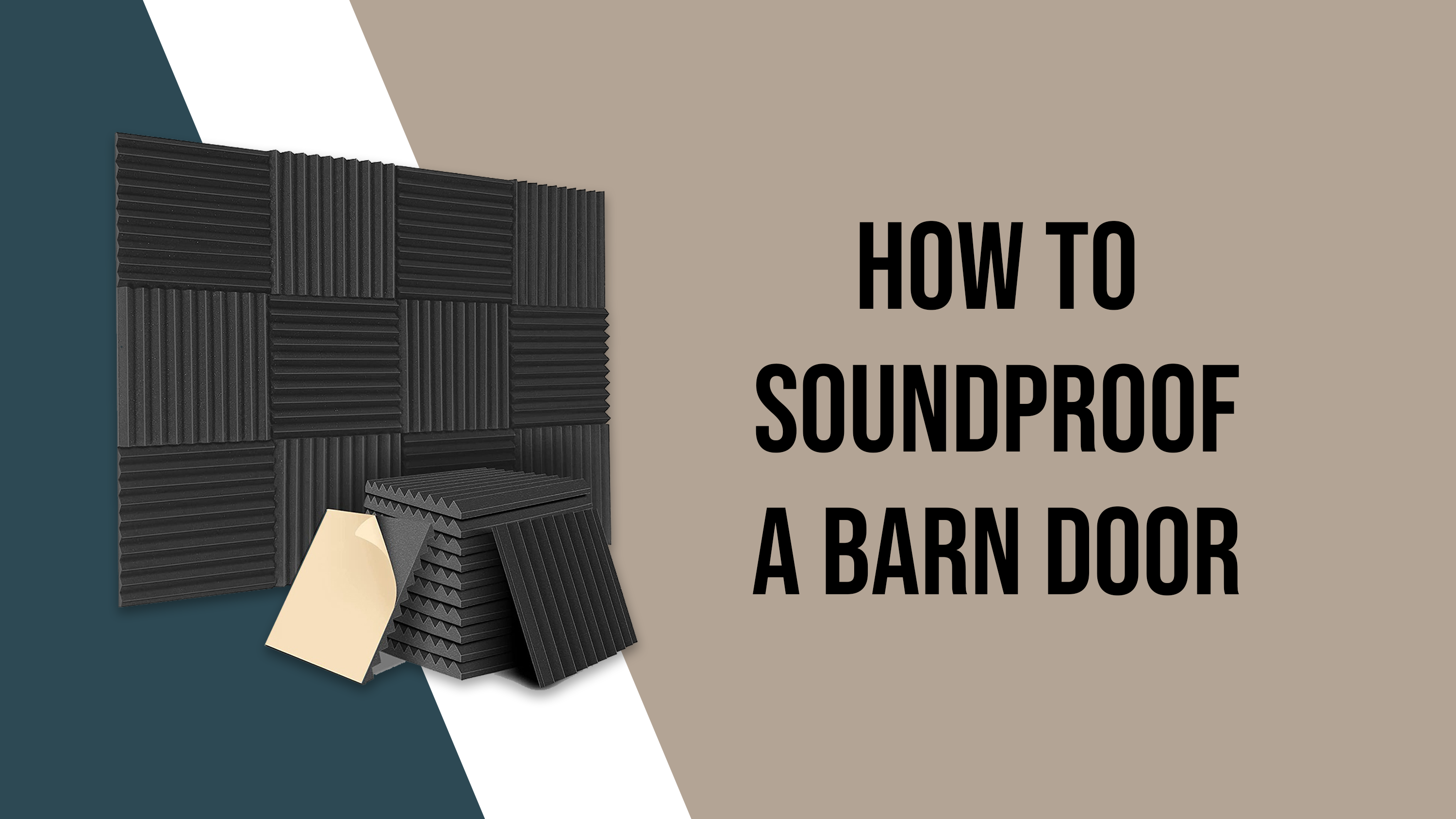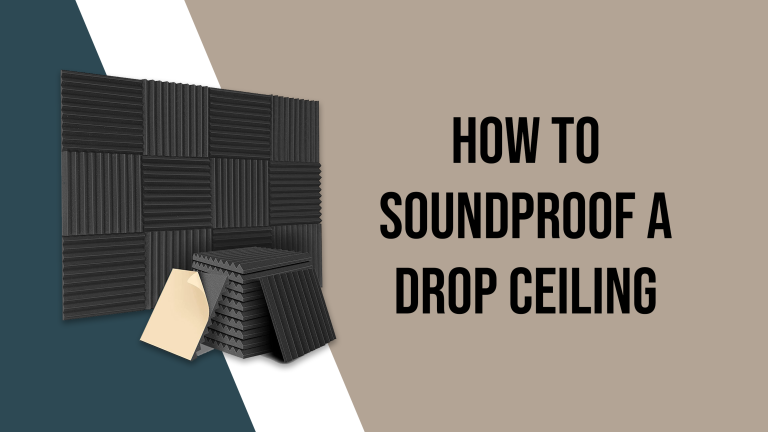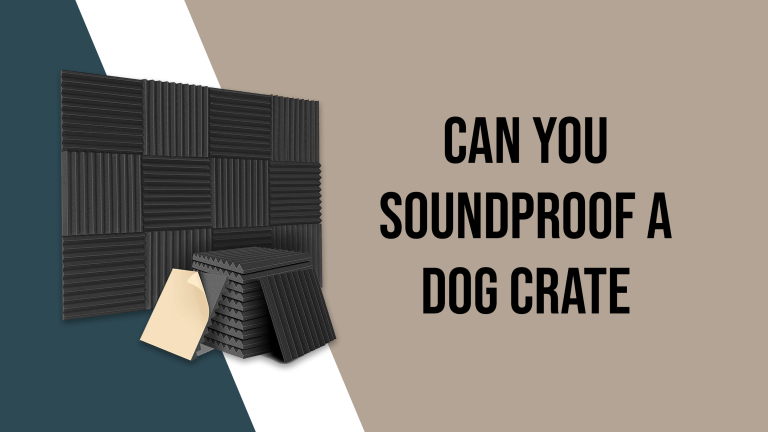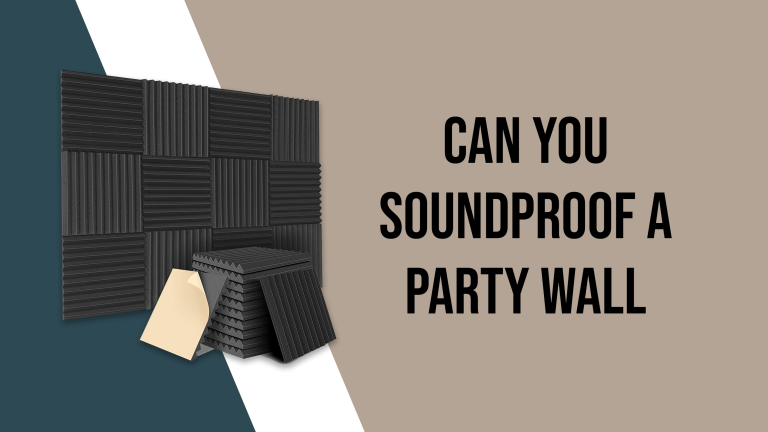How To Soundproof A Barn Door
Barn doors are a popular design choice for many homeowners, but they can also be a source of noise pollution. Whether you’re trying to block out street noise or keep the sound of your home theater from disturbing the rest of the house, soundproofing a barn door can help. You can easily Soundproof A Hollow Door.
As for band practices, you may also need to soundproof a basement.
In this article, we’ll walk you through the steps of soundproofing a barn door, including the materials you’ll need and the best techniques to use
How to Soundproof A Barn Door?
Keep in mind that soundproofing a barn door can be labor-intensive and may require some technical knowledge, so it’s best to hire a professional if you’re not confident in your DIY skills.
Materials Needed
- Soundproofing foam or acoustic panels
- Acoustic sealant or caulk
- Weather stripping or door sweep
- Mass loaded vinyl (MLV)
- Green glue
- Screws or nails
.
Steps To Soundproof A Barn Door
Step 1: Add Soundproofing Foam or Acoustic Panels
The first step in soundproofing a barn door is to add soundproofing foam or acoustic panels to the back of the door. These materials are designed to absorb sound waves and reduce noise transmission. You can purchase pre-cut panels or foam that can be easily cut to fit the size of your door.
Step 2: Seal the Gaps
Next, you’ll want to seal any gaps around the edges of the door. Use an acoustic sealant or caulk to fill in any gaps around the doorframe. This will prevent sound from leaking through any cracks or crevices.
Step 3: Install Weather stripping or a Door Sweep
Weather stripping or a door sweep can also be added to the bottom of the barn door to prevent sound from passing through. These materials create a tight seal between the door and the floor, blocking out any unwanted noise.
Step 4: Add Mass Loaded Vinyl (MLV)
Another effective material for soundproofing a barn door is mass loaded vinyl (MLV). This material is designed to block sound waves and can be added to the back of the door or to the doorframe. MLV is a heavy, dense material, so it’s important to make sure your door is strong enough to support it.
Step 5: Apply Green Glue
Green glue is a special adhesive that can be used to soundproof a barn door. It’s applied between two layers of material, such as drywall, and when dry it creates a soundproof barrier. It can be used in conjunction with other soundproofing materials or on its own.
Step 6: Install Screws or Nails
Finally, use screws or nails to secure all the soundproofing materials to the door. Make sure everything is securely attached and that there are no gaps or openings that could allow sound to pass through.
Why Soundproof a Barn Door?
Soundproofing a barn door can help reduce noise pollution and improve the overall sound quality in the room, by blocking unwanted noise from passing through the door and creating a tight seal between the door and the floor. It can also be useful for privacy, blocking sound from passing through the door to other rooms and keep your home theater or music room sound from disturbing the rest of the house.
How to Choose the Right Materials for Soundproofing?
To choose the right materials for soundproofing a barn door, consider the type and level of noise you want to block, the cost of materials and your budget, the ease of installation and compatibility with your door, and the durability of the materials.
Some common materials used for soundproofing include soundproofing foam or acoustic panels, acoustic sealant or caulk, weather stripping or door sweep, mass loaded vinyl (MLV), and green glue. Research and compare the effectiveness and cost of different materials before making a final decision. It’s also recommended to consult with a professional for expert advice.
Tips for Installing Soundproofing Materials
Here are some tips for installing soundproofing materials on a barn door:
Measure the door:
Before purchasing materials, take accurate measurements of the barn door, including the width, height, and depth. This will help you determine how much material you will need and make sure you buy the right size for your door.
Clean the surface:
Make sure the surface of the door is clean, dry, and free of dust or debris before installing soundproofing materials. This will help ensure a secure and proper bond between the door and the materials.
Start with the gaps:
Begin by sealing any gaps around the edges of the door with acoustic sealant or caulk. This will prevent sound from leaking through any cracks or crevices.
Install weather stripping or door sweep:
Attach weather stripping or door sweep to the bottom of the door to prevent sound from passing through. This will create a tight seal between the door and the floor.
Apply soundproofing materials:
Apply soundproofing foam or acoustic panels to the back of the door, or mass loaded vinyl (MLV) to the doorframe. Make sure to follow the manufacturer’s instructions for installation and use the right adhesive for the material.
Apply green glue:
Apply green glue between two layers of material, such as drywall, and when dry it creates a soundproof barrier.
Secure with screws or nails:
Finally, use screws or nails to secure all the soundproofing materials to the door. Make sure everything is securely attached and that there are no gaps or openings that could allow sound to pass through.
Test the door: After installation, test the door to ensure it is soundproofed to your satisfaction. If not, you may need to add additional layers of soundproofing materials.
Hire a professional:
If you’re not confident in your DIY skills or have complex soundproofing needs, it’s best to hire a professional. They will have the experience and expertise to ensure your barn door is soundproofed correctly and efficiently.
How to Close the Gap on Barn Doors?
There are several ways to close the gap on barn doors:
Use weather stripping:
Weather stripping is a flexible material that can be used to seal gaps around the edges of the door. It can be applied to the door frame or the door itself, and can be easily cut to fit the size of the gap.
Use door sweeps:
Door sweeps are a type of weather stripping that are designed to seal the gap between the bottom of the door and the floor. They can be easily installed on the bottom of the door and can be adjusted to fit the size of the gap.
Use acoustic sealant or caulk:
Acoustic sealant or caulk can be used to fill gaps around the edges of the door. The sealant or caulk can be applied to the door frame or the door itself and can be easily smoothed out to create a tight seal.
Use door gaskets:
Door gaskets are a type of weather stripping that are designed to seal gaps around the edges of the door. They can be easily installed on the door frame or the door itself and can be adjusted to fit the size of the gap.
Use self-adhesive tape:
Self-adhesive tape can be used to seal gaps around the edges of the door. It is easy to install and can be adjusted to fit the size of the gap.
It is important to note that it is best to close the gap before hanging the barn doors, but if that is not possible, it is recommended to consult with a professional for expert advice.
FAQ’s
Can you make barn doors soundproof?
Yes, barn doors can be made soundproof by using materials such as soundproofing foam or acoustic panels, acoustic sealant or caulk, weather stripping or door sweep, mass loaded vinyl (MLV), green glue and screws or nails.
How do I make my barn doors air tight?
To make barn doors air tight, use weather stripping or a door sweep to create a tight seal between the door and the floor. Seal any gaps around the edges of the door with acoustic sealant or caulk. Use green glue between two layers of material such as drywall, and use mass loaded vinyl (MLV) to the doorframe.
How do you close a gap in a barn door?
To close a gap in a barn door, use an acoustic sealant or caulk to fill in any gaps around the doorframe. This will prevent sound from leaking through any cracks or crevices
How do you draft proof a barn door?
To draft proof a barn door, use weather stripping or a door sweep to create a tight seal between the door and the floor. Seal any gaps around the edges of the door with acoustic sealant or caulk. Use green glue between two layers of material such as drywall, and use mass loaded vinyl (MLV) to the doorframe.
Is a barn door enough privacy for a bathroom?
A barn door may provide some level of privacy, but it may not be enough for a bathroom. For a more private bathroom, consider using a solid door or adding a lock to the barn door.
What can I use instead of a barn door?
There are several options that can be used instead of a barn door, such as a pocket door, sliding door, bi-fold door, or a traditional hinged door.
What is the best material for a soundproof door?
Mass Loaded Vinyl (MLV) is considered one of the best materials for soundproofing doors, as it is a dense, heavy material that can effectively block sound waves.
How can I soundproof my door without foam?
You can soundproof a door without foam by using materials such as acoustic sealant or caulk, weather stripping or door sweep, mass loaded vinyl (MLV), green glue, and screws or nails.
How do you soundproof a door on a budget?
You can soundproof a door on a budget by using inexpensive materials such as weather stripping or door sweep, acoustic sealant or caulk, and mass-loaded vinyl (MLV). You can also use soundproofing curtains or rugs to reduce noise transmission.
Do barn doors work for bedrooms?
Barn doors can work for bedrooms, depending on the design and size of the room, and also your personal preferences. They can provide a unique design element and can save space compared to a traditional hinged door. However, they may not provide as much privacy as a solid door.
Conclusion
Soundproofing a barn door is a simple and effective way to reduce noise pollution in your home. By following these steps and using the right materials, you can create a soundproof barrier that will keep unwanted noise out and allow you to enjoy a peaceful living space.








